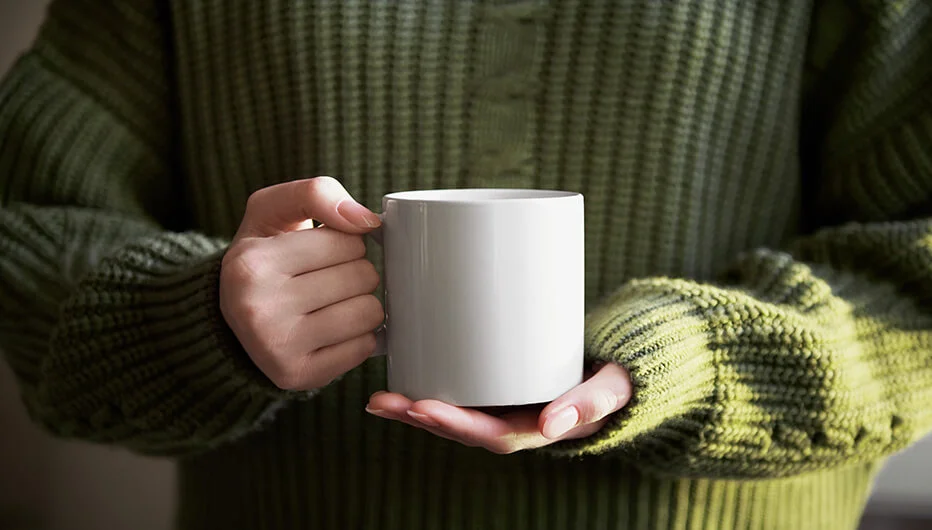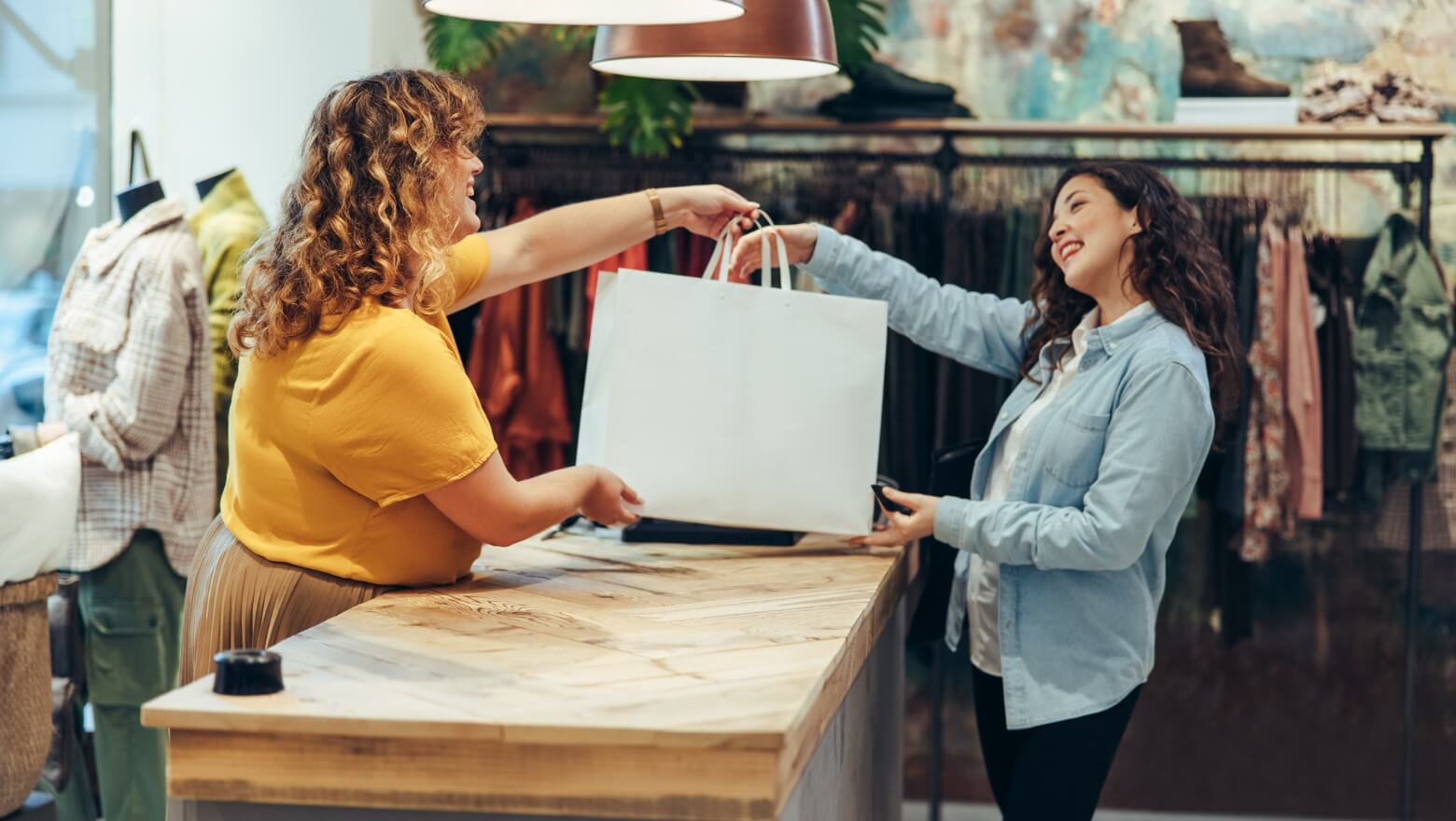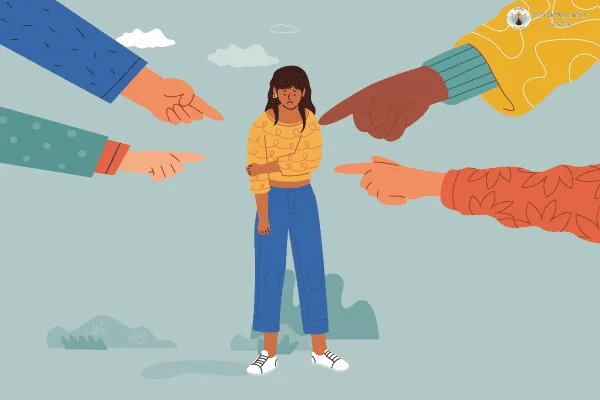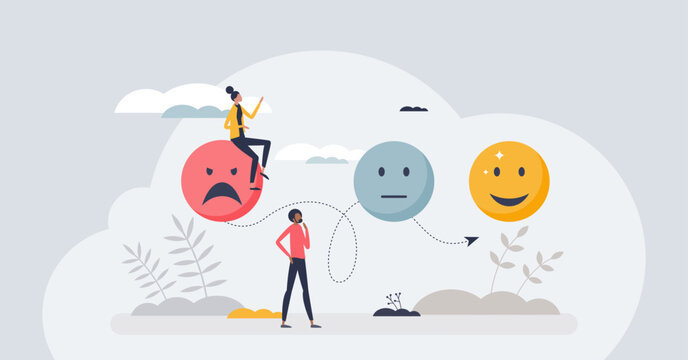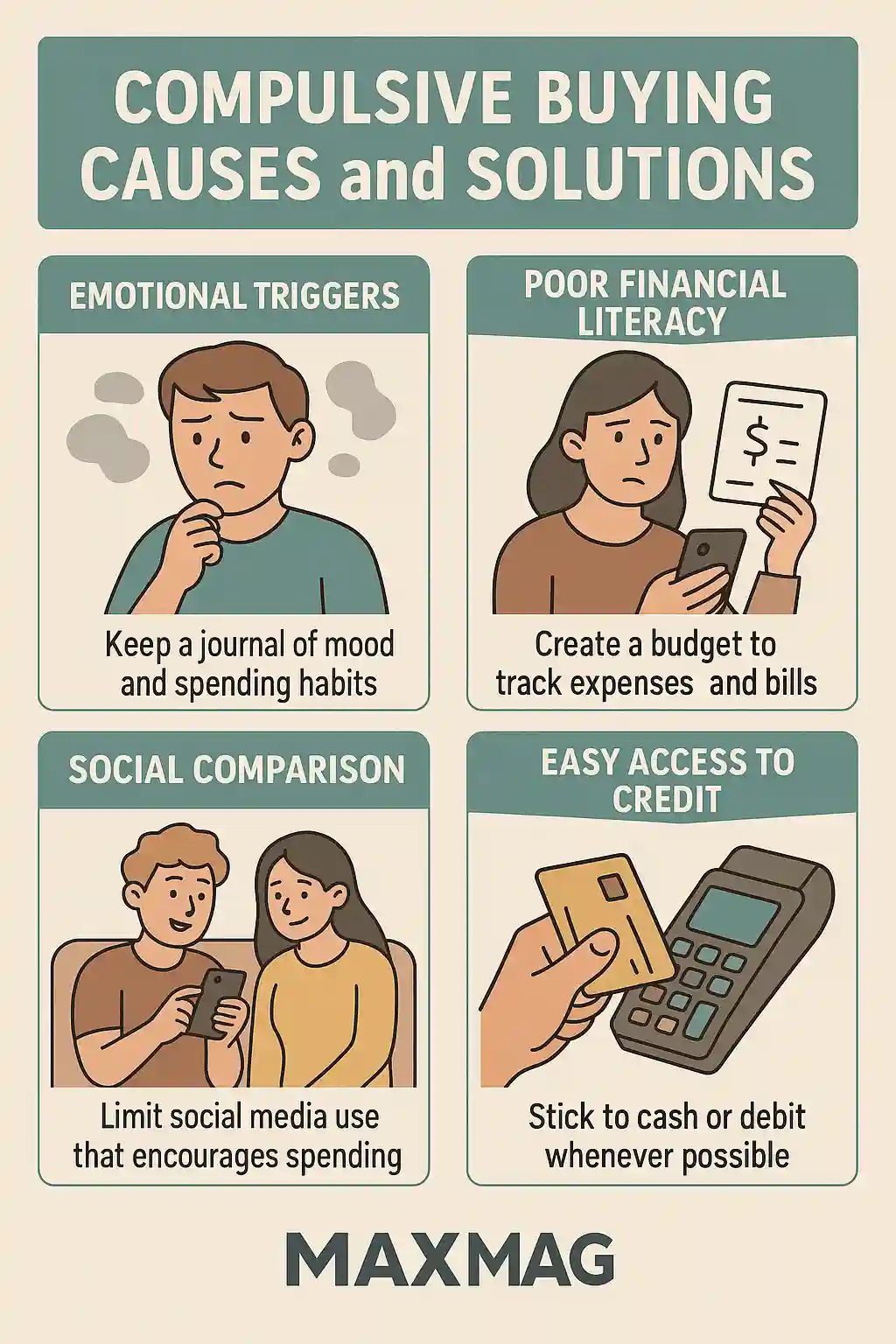
We’ve all splurged on something we didn’t need—a flashy pair of shoes, a second coffee machine, or a new gadget we barely use. But for some people, spending isn’t an occasional slip. It’s a constant urge. Shopping becomes a way to soothe, cope, or escape. This article explores compulsive buying causes and solutions, offering real tools to break the cycle and rebuild healthier habits.
What Is Compulsive Buying?
Compulsive buying, also called oniomania, isn’t simply loving to shop. It’s a pattern of uncontrollable spending that often leads to financial, emotional, and even relational problems. Unlike an occasional impulse buy, compulsive buyers feel a sense of urgency before the purchase and guilt or regret afterward. They may hide receipts, lie about expenses, or continue spending despite mounting debt.
Experts describe compulsive buying as a behavioral addiction. It’s not about greed or materialism—it’s often about managing emotional pain in the only way someone knows how: through consumption.
Common Triggers: Why People Shop Beyond Their Means
Emotional Discomfort
Many compulsive buyers shop to regulate emotions. Loneliness, stress, sadness, boredom—these feelings can spark the urge to buy. The act of purchasing offers a brief emotional high, a feeling of control, or even a sense of identity. But that high doesn’t last.
Low Self-Esteem and Identity Struggles
People with low self-worth may use shopping to feel more confident or socially accepted. Buying stylish clothes or luxury items can act as a temporary mask for internal insecurity. This link between self-perception and purchasing is a major piece of the compulsive behavior puzzle.
Advertising and Consumer Culture
We live in a world where advertising is everywhere. From social media influencers to email deals and digital ads, we are constantly encouraged to buy more—especially with one-click checkout options. Brands are increasingly targeting emotional pain points. According to research by the American Psychological Association, emotional marketing can significantly impact impulsive purchases.
Compulsive Buying Causes and Solutions – A Balanced Look
Compulsive Buying Causes and Solutions
Understanding both the why and how to heal is the foundation of long-term change. Below are the major causes of compulsive buying and the human-centered strategies that can help overcome it.
Cause #1: Emotional Triggers
Solution: Emotional Awareness & Regulation
Start by tracking your emotional state before, during, and after each purchase. Keep a journal that documents your mood when you feel the urge to buy. Over time, patterns will emerge. Do you shop when you’re lonely? After fights with your partner? Once you spot the triggers, you can build healthier ways to cope—such as calling a friend, exercising, or writing in a journal.
Cause #2: Poor Financial Literacy
Solution: Budgeting and Spending Awareness
Many people simply don’t know how to budget. That’s not a character flaw—it’s a skill that needs to be learned. Start with a simple budget that separates essentials, savings, and discretionary spending. Apps like YNAB (You Need A Budget) or Mint can help. When you have a clear picture of where your money goes, it becomes harder to spend blindly.
Cause #3: Social Comparison
Solution: Digital Detox & Value Realignment
Social media platforms like Instagram and TikTok often glorify lifestyles that are edited, curated, and unrealistic. Seeing others on luxury vacations or buying designer products can create pressure to spend more just to keep up. Taking a break from these platforms—or unfollowing triggering accounts—can be liberating. Refocus on what truly matters to you, not what gains likes.
Cause #4: Easy Access to Credit
Solution: Create Friction
Having multiple credit cards or digital wallets can make spending feel effortless. One effective tactic? Make it harder to buy. Delete saved cards from online retailers. Use cash when possible. Turn off autofill on your phone or browser. These small “roadblocks” give your rational brain time to catch up with your emotional urges.
Real-Life Strategies That Actually Work
Delay Gratification
Implement a 48-hour rule. When you want to buy something non-essential, wait two days. Often, the desire fades. If you still want the item, buy it with intention—not emotion.
Create a Wish List
Instead of adding things to your cart and checking out, create a digital wish list. Revisit it monthly and reevaluate each item. This practice reduces impulse buys and helps you identify what you genuinely want versus what was just a fleeting craving.
Use a Shopping Journal
A shopping journal helps you notice spending patterns. Include:
-
What you bought
-
How much you spent
-
Why you bought it
-
How you felt afterward
Over time, this tool reveals what’s truly going on beneath the surface.
Replace the Habit
Buying offers a dopamine hit—but so do other things. Try replacing the shopping urge with a healthier ritual: go for a walk, play music, paint, or do a quick workout. You’re not just removing a behavior—you’re replacing it with something more constructive.
When You Need More Than Tips: The Case for Therapy
Sometimes, compulsive buying stems from unresolved trauma, untreated depression, or anxiety. In these cases, deeper intervention may be needed. Cognitive Behavioral Therapy (CBT) has shown strong results in helping people reframe negative thought patterns and build healthier responses to emotional stress.
A qualified therapist can help you explore your personal triggers and offer support tailored to your life. If in-person therapy feels inaccessible, platforms like BetterHelp or Talkspace offer virtual sessions with licensed professionals.
You’re Not Alone—And You’re Not Broken
If you struggle with compulsive buying, it doesn’t mean you’re irresponsible or weak. It means you’ve used spending as a survival strategy—something that temporarily helped you feel better, even if it later caused problems.
You’re not broken. You’re human.
Recognizing the issue is the first step. Taking small actions—like journaling, deleting shopping apps, or seeking support—is the second. Over time, these steps will help you regain control, reduce debt, and feel more secure emotionally and financially.
Lasting Change Takes Time, Not Perfection
Relapses may happen. That’s normal. Don’t let one bad day ruin your momentum. Each time you reflect instead of reacting, you strengthen the part of your brain that makes thoughtful decisions. Each skipped impulse buy is a quiet win.
Overcoming compulsive buying is a process, not a destination. Progress is measured not in how much you save, but in how empowered you feel when you make a decision.
FAQ About Compulsive Buying Causes and Solutions
Q1: What are the early signs of compulsive buying?
Q2: Can compulsive shopping be considered an addiction?
Q3: Does therapy help with shopping addiction?
Q4: How can I stop buying things I don’t need?
Q5: Are there any apps to manage spending habits?
Q6: When should I seek professional help?

